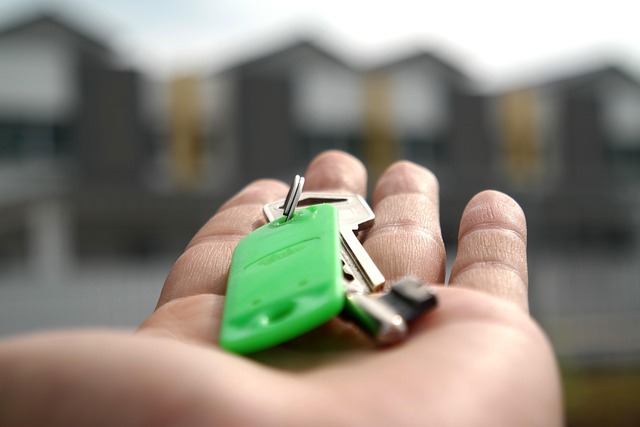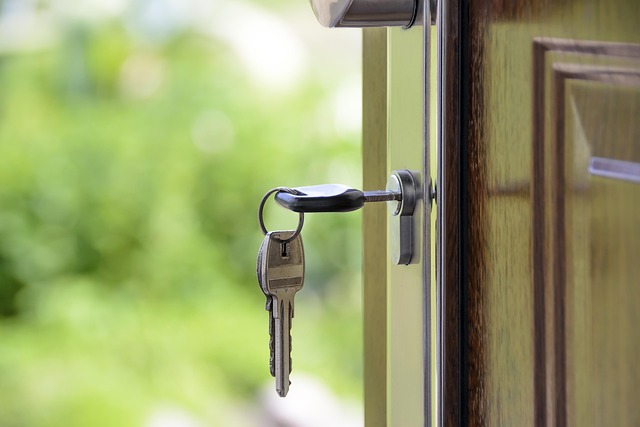Portable DIY alarm systems offer flexible, customizable home security solutions, ideal for travelers and dynamic lifestyles. They integrate seamlessly with smart home ecosystems via wireless technologies like Wi-Fi or Bluetooth, enabling remote monitoring and automated responses via smartphone apps. Compatibility with protocols like Zigbee, Z-Wave, or Wi-Fi ensures coordinated actions with compatible devices—smart cameras capturing footage, lights flashing on, and locks securing the property—for enhanced security and convenience. A robust network setup with stable internet and strong security measures provides peace of mind.
“Unleash the power of self-defense with portable DIY alarm systems—a game-changer in home security. This article explores how these compact yet potent devices integrate seamlessly with smart home ecosystems, offering enhanced safety and peace of mind. From understanding the benefits of DIY alarms to setting up a secure network and customization options, we delve into the world of portable DIY alarm systems, providing insights for savvy homeowners.”
- Understanding Portable DIY Alarm Systems: Benefits and Applications
- Integrating with Smart Home Devices: Compatibility and Protocols
- Setting Up a Secure Network: Wireless Connectivity and Device Control
- Enhancing Security: Customization, Monitoring, and Automation Options
Understanding Portable DIY Alarm Systems: Benefits and Applications

Portable DIY alarm systems offer a versatile and customizable solution for home security. These innovative devices provide individuals with the power to take control of their safety, allowing them to create tailored alarm setups that meet specific needs. One of the key benefits is their flexibility; users can easily place sensors in various locations, from doors and windows to valuable asset areas, ensuring comprehensive coverage.
These systems are ideal for travelers or those with dynamic lifestyles, offering peace of mind while away from home. With remote monitoring capabilities, users can receive alerts on their smartphones, enabling them to respond swiftly to potential issues. Moreover, portable DIY alarms integrate seamlessly with smart home ecosystems, allowing for automated responses and voice control, enhancing convenience and security.
Integrating with Smart Home Devices: Compatibility and Protocols

Integrating portable DIY alarm systems with smart home devices offers a comprehensive security solution. The key to this integration lies in compatibility and protocols. Most modern smart home ecosystems utilize specific communication protocols like Zigbee, Z-Wave, or Wi-Fi, ensuring seamless connection between various devices. DIY alarm systems that are designed to be portable often come equipped with these same protocols, allowing them to effortlessly link up with smart locks, cameras, sensors, and other compatible devices.
This integration provides users with a unified control panel for their entire home security setup. For instance, when an intruder sets off the portable DIY alarm, connected smart cameras can instantly capture footage while smart lights nearby flash on, creating a deterring effect. Similarly, smart locks can be remotely locked or unlocked based on alarm status, enhancing both security and convenience.
Setting Up a Secure Network: Wireless Connectivity and Device Control

Setting up a secure network is a crucial step in integrating portable DIY alarm systems with smart home devices. Wireless connectivity, often facilitated by Wi-Fi or Bluetooth, allows these alarms to communicate seamlessly with your home’s existing smart ecosystem. Once connected, users can control their portable DIY alarm systems through dedicated apps on smartphones or tablets, providing remote monitoring and quick response times. This integration ensures that even when you’re away from home, your portable alarm remains an effective security measure.
A robust network infrastructure is essential to ensure reliable device control. Stable internet connections and well-configured security protocols safeguard against unauthorized access. By setting up firewalls, encryption, and secure passwords, you create a fortress around your smart home devices, including your DIY alarms. This level of protection not only safeguards your property but also gives you peace of mind, knowing that your portable DIY alarm systems are as secure as the rest of your connected devices.
Enhancing Security: Customization, Monitoring, and Automation Options

Integrating portable DIY alarm systems with smart home devices offers enhanced security through customization, monitoring, and automation options. These flexible systems allow users to tailor their security measures to specific needs, creating a layered defense that can deter potential intruders. With smart integration, alarms can be linked to other devices like cameras, doors, and sensors, providing real-time alerts and comprehensive monitoring.
Automation takes security to the next level. For instance, upon detecting unauthorized access, the DIY alarm can trigger pre-set scenarios—such as illuminating lights, playing loud music, or automatically locking doors—all controllable through a smartphone app. This not only scares off intruders but also gives homeowners peace of mind by ensuring immediate response to potential threats.
Integrating portable DIY alarm systems with smart home devices offers a powerful solution for enhanced security. By ensuring wireless connectivity and device control through compatible protocols, homeowners can benefit from customization, real-time monitoring, and automated responses to potential threats. These integrated systems not only protect your space but also provide peace of mind, making them an attractive option in today’s digital era.
